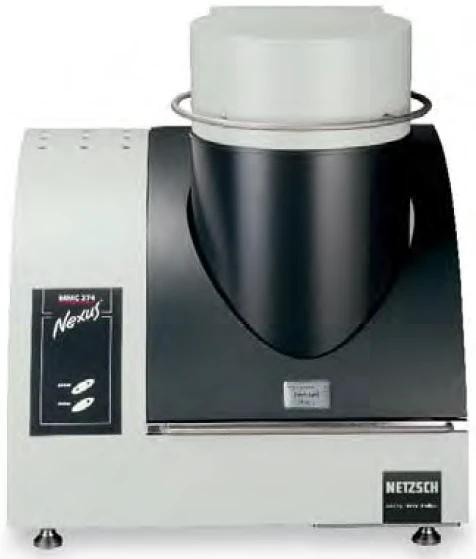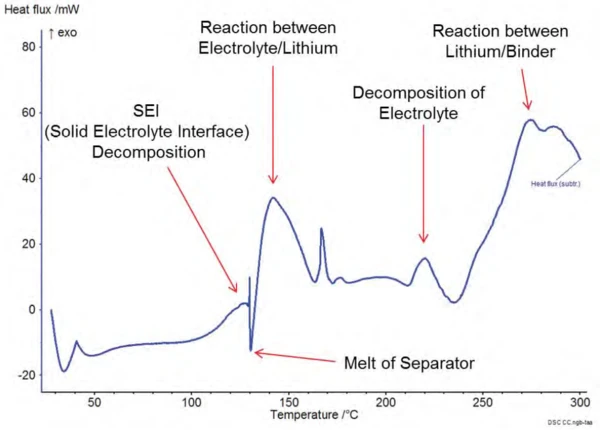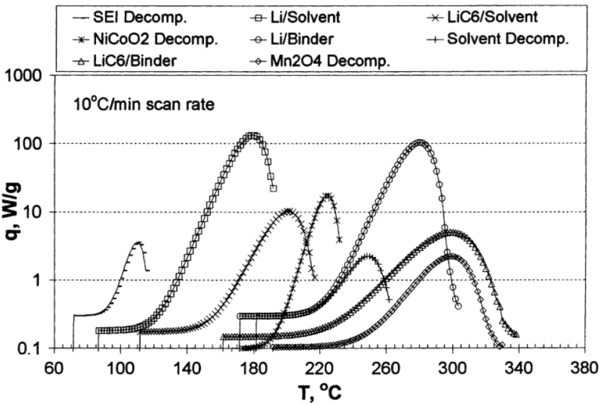Introduction
Lithium ion coin cell is becoming more and more popular. It offers higher power density and capacity and is rechargeable. There are many complex chemical and physical changes within the cell as a function of time, temperature and cycling load. The amount of heat released or absorbed during these physicochemical changes and the rate of the energy change within the coin cell provides additional information about cell chemistry and can accelerate the battery development process.
Heating coin cells and carefully monitoring the Reação de DecomposiçãoA decomposition reaction is a thermally induced reaction of a chemical compound forming solid and/or gaseous products. decomposition provides information not just on safety but in understanding how formations occur within the cell. For instance, one can clearly see the Reação de DecomposiçãoA decomposition reaction is a thermally induced reaction of a chemical compound forming solid and/or gaseous products. decomposition of the solidelectrolyte interphase (SEI) as one of the first heat signatures of cell decomposition. By accurately measuring the temperature, energy and rate of energy release the strength of the SEI formation can be evaluated; the larger the decomposition peak the more energy stored in the SEI layer.
DSC testing of cell material is a proven way to make inherently safer cells and improve development. Obtaining clear onset temperatures of major exothermic decomposition events within the cell, measuring kinetics of these decompositions at higher temperatures is crucial in understanding the behavior of different cell chemistries exposed to internal shorts or hot spots. Designing more robust chemistries is one important route to preventing or mitigating the risk and hazards associated with field failures. Small investments during this development stage can have large financial benefi ts during product life later on.
Such DSC test was done before by extracting cell material from a coin cell and doing the test in a conventional DSC. Now with the advent of the new high temperature coin cell module from NETZSCH, a DSC scan can be done in-situ on a whole coin cell battery. This application note shows, for the first time, a DSC scan of a commercial lithium ion coin cell battery from room temperature to 300°C.

Instrumentation
The new instrument used is the high temperature coin cell module on NETZSCH Calorímetro de Múltiplo Módulo (MMC)A multiple mode calorimeter device consisting of a base unit and exchangeable modules. One module is prepared for accelerating rate calorimetry (ARC), the ARC-Module. A second one is used for scanning tests (Scanning Module) and a third one is related to battery testing for coin cells (Coin Cell Module).MMC 274 Nexus® (fig 1). It is the only DSC-like system for research and quality control of coin cell battery in the world. The key component of this new instrument is the sensor (fig 2 and 3). It features an innovative differential measurement design based on thermopiles for improved sensitivity and stability of heat flow measurement. It is designed to hold a standard or prototype coin cell batteries as samples or reference. External battery cycler can be connected to the instrument easily through a plug-andplay LEMO connector. Isothermal cycling of coin cell can be easily performed under various charging/discharging conditions. The new robust instrument can also do DSC scanning on a whole coin cell which was not possible before.


Results
A DSC scan of a commercial lithium ion coin cell LiR2032 from room temperature to 300°C was conducted at 1K/min using the HT Módulo de Célula tipo moedaA calorimeter module being part of the Multiple Module Calorimeter (MMC) allowing for scanning and isothermal tests of complete coins of variable size. The DSC-like twin design gives a differential signal of the heat signature during a heating ramp or charging and discharging of batteries.Coin Cell Module. Figure 4 is the heat flow result. It is the first piece of data of this kind in the world. It shows multiple reactions during coin cell disintegration upon heating. It is evident that the exothermic SEI decomposition is followed by the melting of the separator at approximately 130°C (sharp endothermic event). This endotherm occurs nearly simultaneously with the reaction between electrolyte and lithium. The decomposition of electrolyte and reaction between lithium and binder happen in higher temperature.

This result agrees with published DSC simulation of different cell components (figure 5) [1]. Figure 6 shows the picture of the coin cell before and after the test. The cell was clearly disintegrated by the high temperature as expected. But the HT coin cell sensor was intact due to its robust design.


Conclusion
The new HT Módulo de Célula tipo moedaA calorimeter module being part of the Multiple Module Calorimeter (MMC) allowing for scanning and isothermal tests of complete coins of variable size. The DSC-like twin design gives a differential signal of the heat signature during a heating ramp or charging and discharging of batteries.Coin Cell Module on NETZSCH MMC 274 Nexus® has opened new opportunity for coin cell battery research. The innovatively designed sensor makes a whole coin cell test possible. A DSC scan up to 300°C is now feasible on a coin cell. Multiple events during cell disintegration can be detected. Such information will help battery scientist understand what will happen when the cell is subject to high temperature or internal short so that they can design cell with higher performance and better safety.